Have you heard about one newest and one of the biggest video crazes to hit the airwaves for the younger set? Well, it’s Songs for Littles featuring Ms. Rachel and her cast. You can find it here–just go to YouTube–everyone knows how to find things on YouTube these days!
I didn’t know about Ms. Rachel’s videos until a couple of months ago as I witnessed my two grandkids, ages 2 ½ and 14 months, literally mesmerized by the up close and personal way Ms. Rachel models and teaches language skills to littles. These kiddos do not have much screen time in their lives, but…they sure do love Ms. Rachel, as well as Cocomelon.
I think you (Are you a parent? A grandparent? An aunt or uncle? A teacher? A pediatrician?) ought to know about Ms. Rachel’s Songs for Littles too! Why? Read on….

THE BACKSTORY OF SONGS FOR LITTLES AND MS. RACHEL
Ms. Rachel’s son experienced speech and language delays as a toddler, so she set out to find resources to help him. Reportedly, nothing quite right was out there. Ultimately, it gave her the motivation to take matters literally into her own hands, as Songs for Littles extensively uses music and hand motions to model and teach language skills.
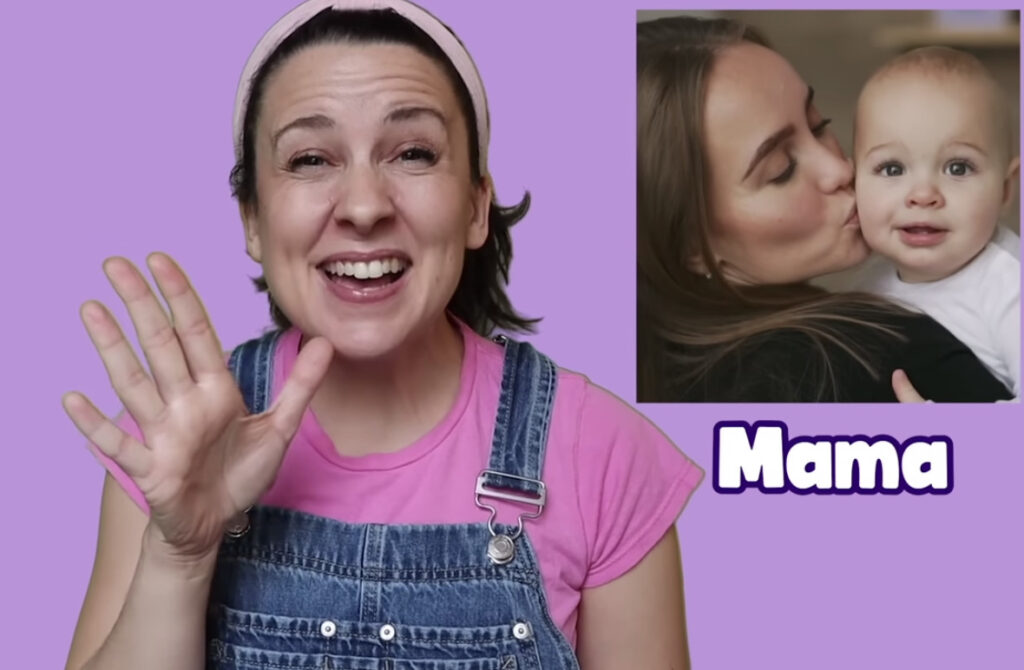
Rachel Griffin Accurso describes herself as “a passionate educator and award-winning songwriter.” She has a Masters degree in Music Education from New York University and is currently pursuing a second Masters degree in Early Childhood Education. Ms. Rachel is a preschool teacher as well. Ms. Rachel has conducted many trainings and courses in areas such as speech development, early childhood development, and early intervention. Finally, she believes “all children are capable, brilliant and important” and I couldn’t agree more–but another adjective I would add is ‘unique’.
Image in the public domain from You Tube
Rachel’s husband, Aron, described as her ‘creative partner’, is hands-on in terms of writing music, arranging skits, editing, and puppeteering. The cast includes several others who have music and dance experience. In addition, Rachel consults with Frida Matute, a speech pathologist. Frida is the Founder and Preschool Program Director of The Indy Lab, a preschool in NY, as well as the Executive Director of Indy Speech Services. Frida is a native bilingual language and literacy specialist who has training in Orton-Gillingham. That said, Frida believes that an explicit phonics approach needs to be at the center of teaching literacy and that prevention plays a critical role in intervention through early screenings, parent and teacher education, and public policy. Personally, I appreciate Ms. Rachel’s consulting with Ms. Matute, whose credentials indicate she is well versed in literacy development starting at birth, as well as in the Science of Reading, which has gotten a good deal of press lately.
Ms. Rachel has 4.8 million subscribers all over the world since Songs for Littles launched in 2019! Her video views have reached 2 billion households! A recent story appeared just a few days ago when 21 month old Bea abandoned her British dialect in favor of an American dialect after binge watching Ms. Rachel! Bea pronounces the word ‘car’ as /kar/ rather than /kah/, as one would say it in the UK. Watch Kelly Convey’s interesting Tik Tok video of Bea speaking. This Tik Tok had over 922,000 ‘likes’!

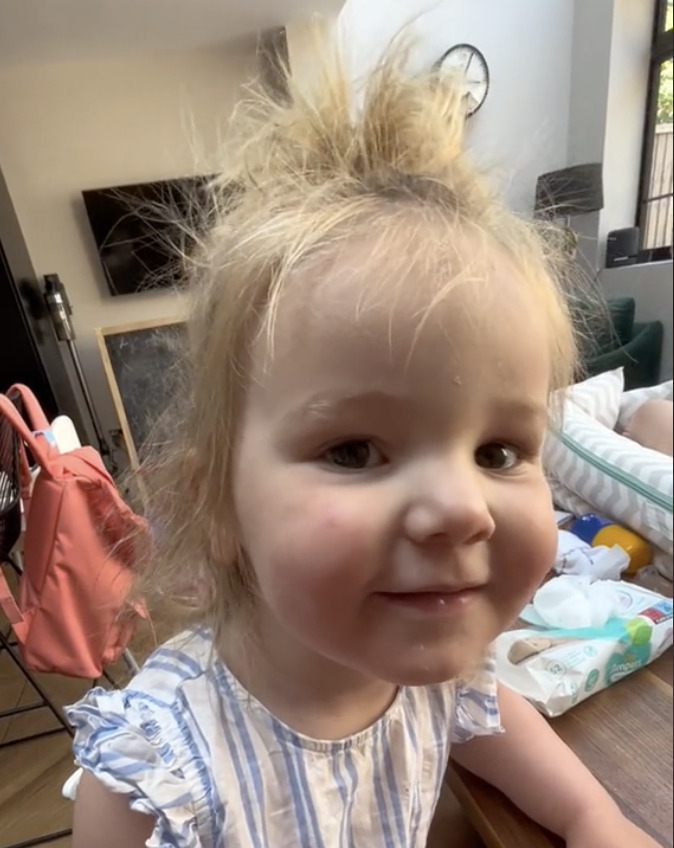
Ms. Rachel’s net worth as a social media personality is reportedly 3 million dollars annually gleaned from YouTube and Tik Tok advertising revenue and sponsored content. In a Today Show interview, Ms. Rachel said she “never expected this to happen.”
WHAT I LIKE ABOUT IT
I like A LOT of things about Songs for Littles including:
- FOCUS on the articulation of speech sounds–Ms. Rachel’s mouth is front and center with the video camera likely inches away from her face. Sometimes Ms. Rachel speaks while pointing to her mouth. For example, when saying “Mama”, Ms. Rachel points to her closed lips when modeling the /m/ sound.
- FOCUS on teaching sign language for basic concepts such as ‘mama’, ‘dada’, ‘eat’, ‘all done’, and ‘more’. Ms. Rachel often speaks and signs simultaneously.
- FOCUS on repetition of vocabulary, concepts, sign language, movement, and fingerplays. Littles learn best via repetition.
- FOCUS on clapping phonemes and syllables which provides essential practice of phonological awareness . Phonological Awareness is an individual’s ability to recognize that words are made up of individual sounds which can be blended for reading and segmented (separated) for spelling. Phonological awareness is considered a precursor to reading.
- FOCUS on social-emotional learning. Ms. Rachel is very consistent in terms of her upbeat delivery, consistency, positive cueing and body language. Even Ms. Rachel’s consistent visual appearance can be reassuring to children. Her signature pink headband and jean overalls have become somewhat of a ‘trademark’. I’ve heard that children and their parents have Ms. Rachel Halloween costumes! Just think about historical television icons such as Captain Kangaroo or Mr. Rogers–they, too, were consistent in terms of delivery and appearance. Young children thrive on structure and routine.
- FOCUS on providing parents and caregivers with good speech and oral language modeling. Parents and caregivers can learn how to interact with their young children optimally by viewing Ms. Rachel. Here is information on speech and language milestones for our youngest learners.
- FOCUS on language learning one bite at a time. Even though a typical video can run for 40-60 minutes, Ms. Rachel is careful to present songs and concepts in short segments without fanfare or visual overstimulation. She even builds “pauses” into her questioning by holding her own ear out and waiting to allow her little viewers to respond!
According to Kelly Hibbler, a dyslexia therapist and parent of a 20 month old in Indianapolis, IN, “Ms. Rachel is highly entertaining and supports emerging language better than most programs I have seen. Her videos are superior because they do not use overstimulating visuals and music and interact with the viewer as if she is in the same space and allows wait time for viewer to ‘answer’.”
Image by Brett Hibbler used with permission
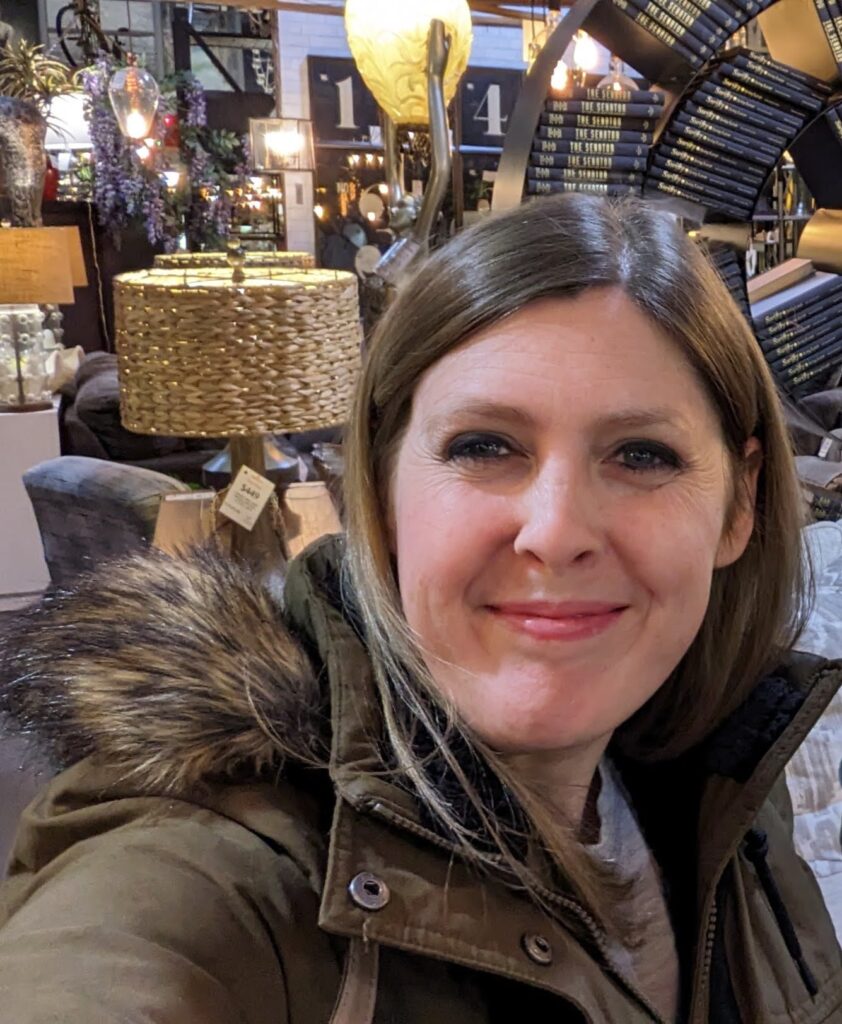
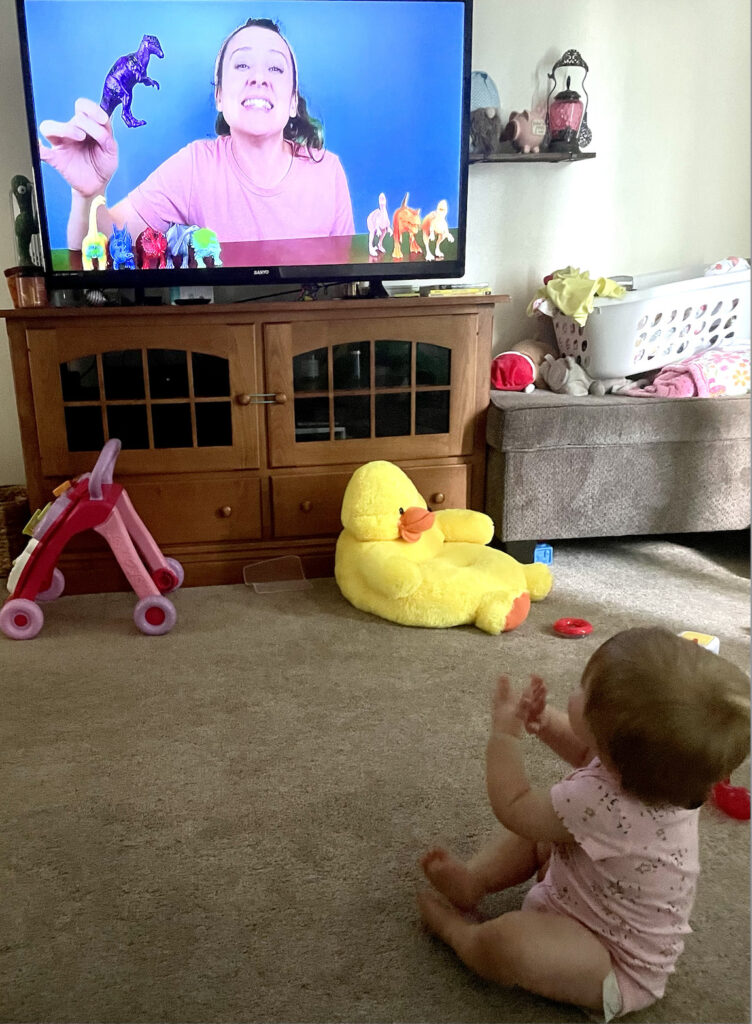
Another mom and educator, Jorie Fahrney of Wooster OH, states, “I just got another parent on the Ms. Rachel train tonight.” Jorie likes the fact that her 15 month old daughter Selena watches “real people rather than cartoons or puppets.” Ms. Fahrney also appreciates the slower pacing of the videos, as well as the lack of many things ‘moving’ on the screen. Ms. Fahrney also said that she likes how “Ms. Rachel teaches a concept simply followed by a song relating to it.”
Image by Jorie Fahrney used with permission
John Vanek, a special education preschool teacher in Wooster OH, states, “ I was pleasantly surprised by Ms. Rachel’s simplicity, the limited amount of things on the screen making her examples clear, the repetitive nature, and by the way she calmly exaggerates her mouth movements and gestures while speaking.”
Image in the public domain from You Tube
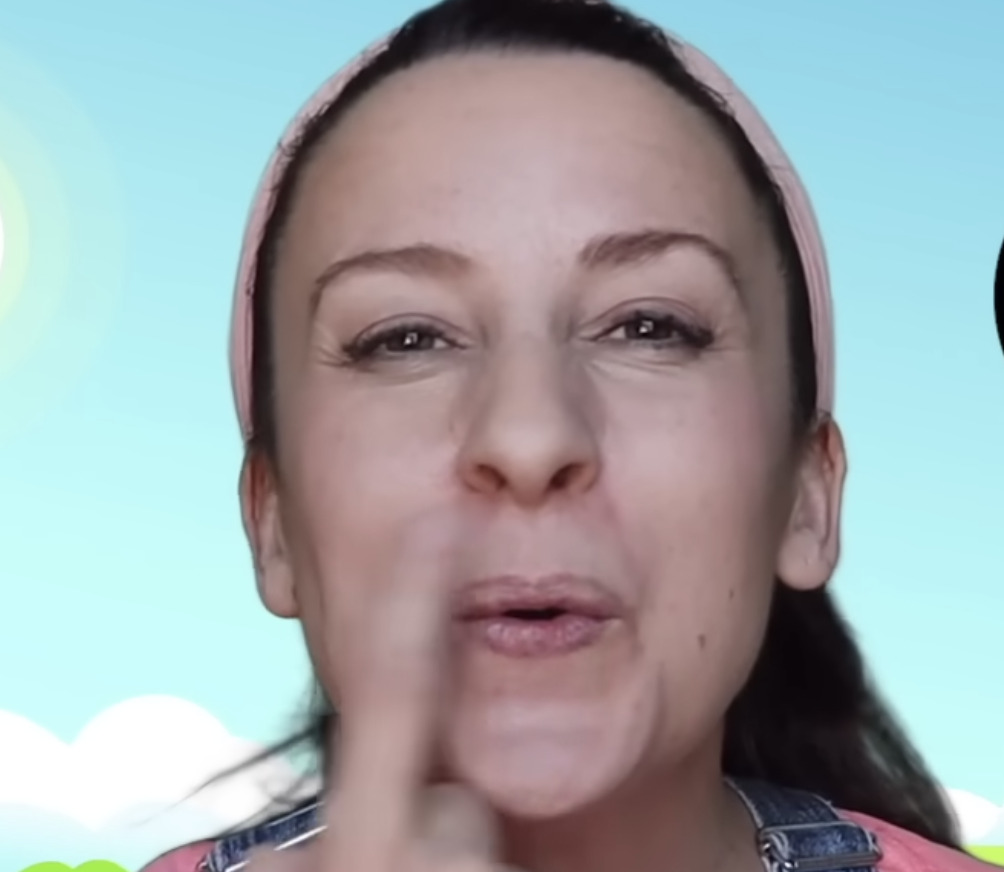
NBC news correspondent Gadi Schwartz recently interviewed Ms. Rachel on The Today Show. He stated, “the secret to Ms. Rachel’s success is in its simplicity.”
Finally, let me emphasize one of the most important points for you to remember forever and always:
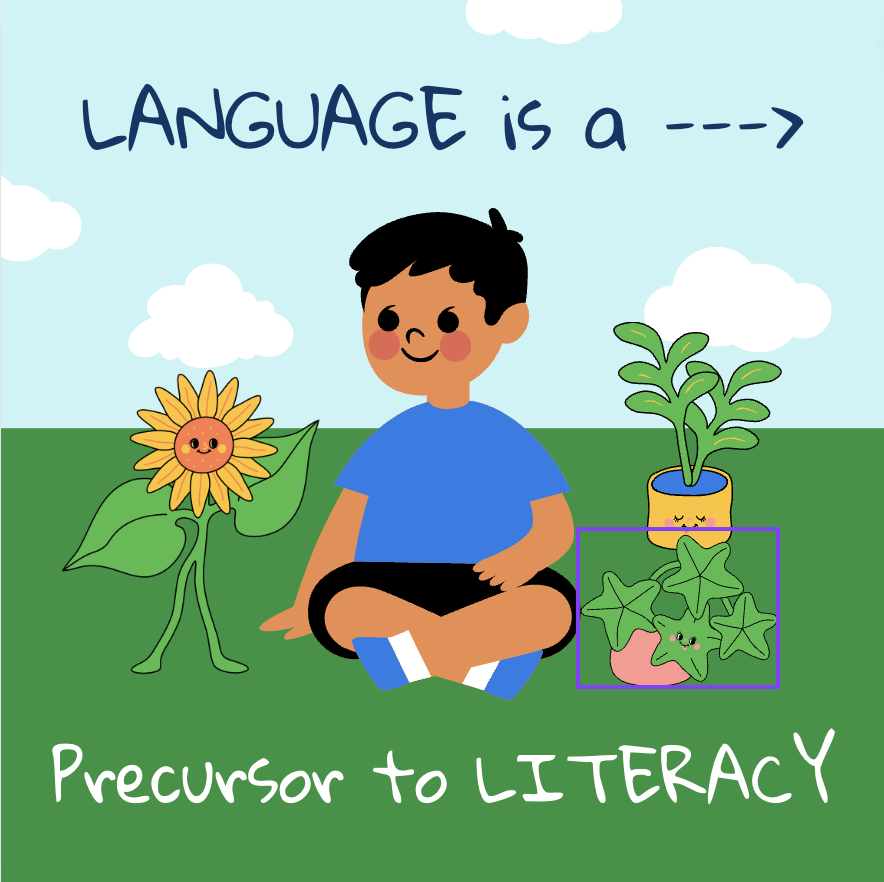
BUT WATCH OUT, BE CAREFUL
I don’t mean to nit-pick, but I have a few issues to note:
My son told me that Ms. Rachel uses the word ‘orange’ to teach the sound/symbol correspondence of ‘o’. The most common sound/symbol correspondence is /ŏ/ as in ‘octopus’ (short o), so I think using the word ‘orange’ is confusing. In Ms. Rachel’s defense, she apparently uses the word ‘fox’ to teach the sound/symbol association for <x>, which is 100% on the mark as compared to teaching <x> as in ‘xylophone’.
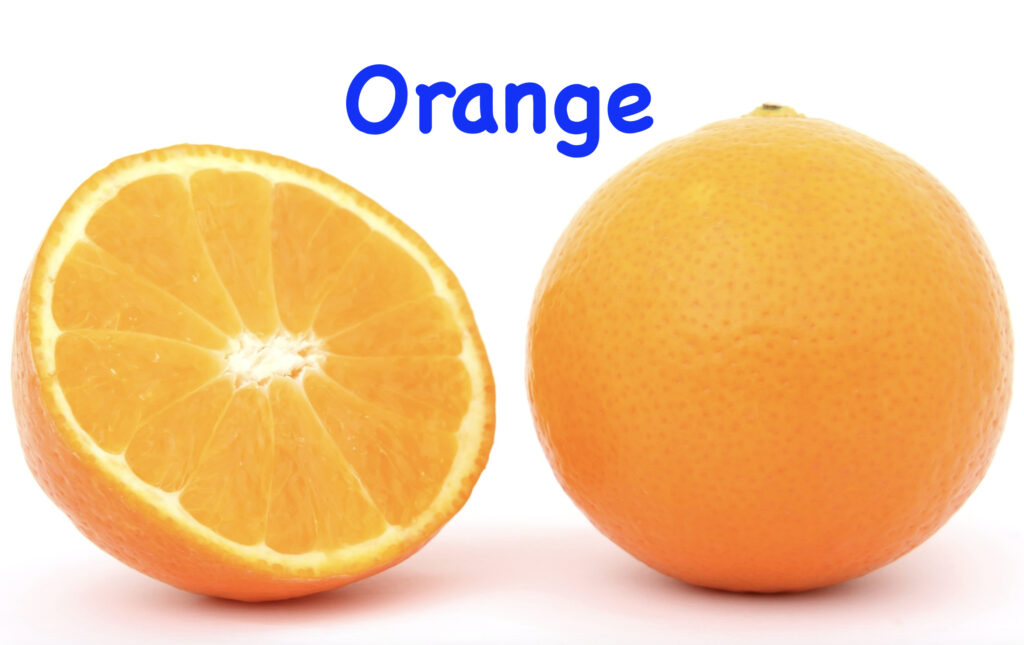
When Ms. Rachel teaches colors, she demonstrates items containing the color and also says the name of the color over and over again, which is totally perfect. That said, the ‘color word’ is also displayed…here is the catch. When young children see a word displayed, they often view word ‘Red’ (note the incorrect use of upper case letters as well) as a complete image to be memorized as whole unit as opposed to 3 individual letters representing 3 individual sounds or phonemes, in this case /r/ /ĕ/ /d/. Furthermore, babies and toddlers really do not need to see color words at ages 1 and 2.
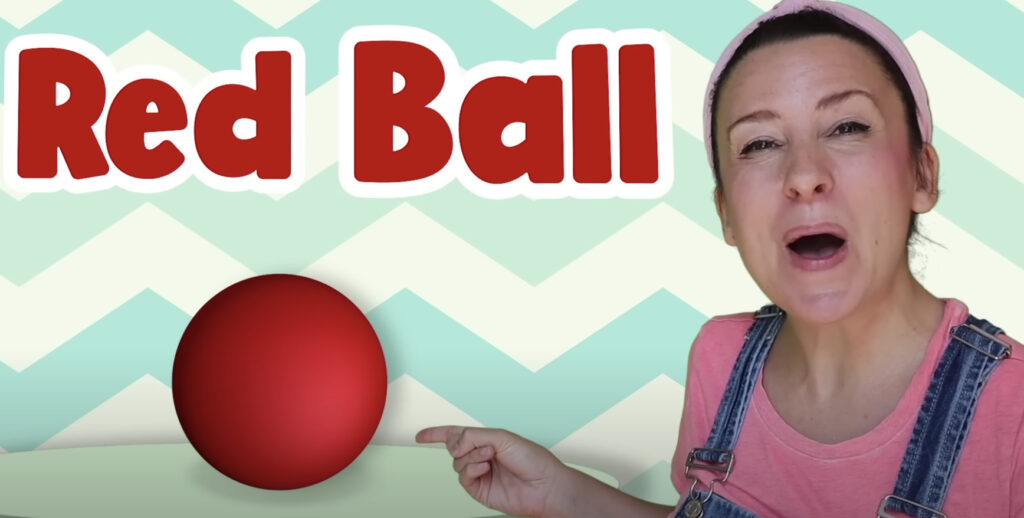
While I am all for helping kids learn sound/symbol relationships, the way these are conveyed is very important. Rather than stating, “’C’ is a letter, this is the sound it makes” and then showing the mouth formation, it would be much better to start with the mouth formation /b/ and then say, “the letter <B> is how we write the /b/ sound. In other words, start with the sound and then show the letter representing that sound.

WHY SHOULD PARENTS KNOW ABOUT MS. RACHEL?
Simply put, Songs for Littles is so darn engaging!! Each video is between 40 and 60 minutes, but the action changes from small and simple (looking at Ms. Rachel’s face or a baby’s face) to many scenes extending and singing about the simple concepts taught to taking place in New York’s Central Park.
Parents need a break. Kelly Hibbler shared “that there have definitely been times that I needed my 20-month-old occupied, for some reason or another.” Parent readers, this is ‘normal’. It is so hard to do everything you need to do in a day (cooking, cleaning, laundry, making an important telephone call, getting ready for work yourself, getting your chlld(ren) ready for daycare, maybe even sitting down and giving yourself a ‘time out’ to regroup–the list is endless) while simultaneously providing 100% attention to your young one 100% of the time. My son and daughter-in-law sometimes use Ms. Rachel time as a distraction when cutting their kids’ nails.
Parents benefit from the modeling they see when they watch Ms. Rachel with their kids. Jorie Farhney views Ms. Rachel as a “better support system for parents.” As an early childhood special educator, Ms. Fahrney feels that “parents don’t always know what to do.” Many parents are “so involved in their adult stuff that they had a hard time remembering at first some of the songs they sang as kids well over 20 years ago.” Once these parents hear Ms. Rachel, “a lot of it comes back.”
Ms. Hibbler shared a few tips that she finds helpful to get the most out of Songs for Littles.
- Watch it with your child, repeat the questions to them and reinforce the skill Ms. Rachel teaches.
- Watch it by yourself if you are unsure of the best way to model language to your child, and then copy her “tricks” and language patterns.
- Pick one or two videos from her collection teaching a set of developmentally appropriate skills, and use only that one for a month or so. This will immerse your child in those skills and allow them to learn and predict the patterns and responses in the videos.
Remember, parents, you are in charge and lead the team (daycare providers, grandparents, friends) who teach your young ones both receptive (listening) and expressive (speaking) language skills!
And let me add one more thing: There is no substitute for ongoing in-person interaction between human beings. If Covid taught us anything, it taught us how crucial human interaction is–it is the epitome of the human condition. According to Dr. Maryanne Wolf, cognitive neuropsychologist and author of Reader Come Home, it is essential that parents/caregivers continue to read books to their children. Dr. Wolf states, “all of this [talking and reading books with joint attention] will lead to the very young to learn how life and words work.”
WHY SHOULD TEACHERS KNOW ABOUT MS. RACHEL?
Honestly, until I saw my grandchildren watching Ms. Rachel, I had no idea it existed. When I asked many educators (elementary and up) if they had heard of Songs for Littles, nearly all of them had never heard about it.
Some of these educators teach kids with language delays–and remember, the Covid years resulted in delayed language skills for many children.
Here are my tips:
- It is important that teachers know what their students are exposed to at home and perhaps build on the concepts taught in the classrooms, especially teachers who teach young learners grades K-2.
- Teachers, take some time to watch Songs for Littles. Watch Ms. Rachel’s simple approach, knowing that it works for many learners, and then model her techniques with your students. Sometimes “less is more.” Kids do not need fancy apps or loud videos with flashing lights to always make learning ‘fun’. Simplicity and consistency may yield better results no matter how the age of your students or the material you teach.
Special education preschool teacher John Vanek shared that he “apprehensively watched Ms. Rachel after repeatedly hearing about her growing fame and hypnotic nature to her young audience.” He was “pleasantly surprised” by the positives he viewed as denoted earlier in this article.
WHAT I WORRY ABOUT
Just a couple of items on this list:
- ALL the educators and parents I spoke with mentioned the notion of limiting ‘screen time’ for our young ones. The American Academy of Pediatrics (AAP) recommends avoiding screens for children younger than 18 to 24 months, except when video chatting with family. The AAP also recommends limiting screen use for preschool children, ages 2 to 5, to just one hour a day of high-quality programming (think Sesame Street or PBS). As Kelly Hibbler notes, “ I stand by the research that advises against screen time for littles, especially under two, and for long periods of time.” And John Vanek added, “I’d hope parents seeing how Ms Rachel interacts with everyday objects in a way children can easily build language would inspire them to to do the same, but with the screen turned off.”
“It’s the best screentime is gonna get”
~ Ms. Rachel
- Even though Ms. Rachel consults with a speech-language pathologist trained in Orton-Gillingham and who advocates for explicit phonics instruction, I see some incorrect verbiage used in the videos; perhaps this will improve moving forward.
- Finally, the unnecessary painful comments involving singer Jules Hoffman is disconcerting. If you are unaware, this talented and engaging musician’s preferred pronouns (they/them) appear only on the Songs for Littles website. Although these pronouns are never used on the videos, many parents became distressed causing upset to both Jules and Ms. Rachel. Sad–I have no words.
Many thanks to Kelly Hibbler, Jorie Fahrney, and John Vanek for sharing their thoughts.
Don’t spend any more time reading my thoughts–go watch Songs for Littles yourself and preferably with some young kiddos you know!!
Hi Dee,
Making a Miss Rachel doll is such a good idea!! Glad your great granddaughter enjoys learning from Miss Rachel!
Lori
Hi, my grandson and I watch Ms. Rachel and he is learning so much. He was non verbal for over 2 years.
I have a DVD player in my truck that I play other videos for him but he always wants Ms. Rachel. I would love if she sold DVDs.
Please consider selling DVDs. Thanks ❤️ 😊
Hi Gigi!
So glad your grandson loves Ms. Rachel. it has helped so many families with children develop language skills. I think DVDs are considered antiquated terminology at this point in time. My kids download videos onto a portable screen (like an iPad) and they have a way of velcroing it to the back of the front seat of their van for their kids. Check it out.
Good luck!!
Lori